The Impact of Trauma
by Kayla Gonzalez
From the time they enter the state’s care and likely long before, foster youth experience trauma that can severely alter their physical, emotional, and psychological well-being. The impact of trauma on foster youth can mean that this vulnerable population faces numerous additional challenges as they grow and develop into adulthood.
Foster youth experience trauma in many ways, often starting at home. Youth will enter the foster care system because they have experienced physical or sexual abuse, neglect, a loss of a parent, or abandonment, forcing the state to step in. Other family stress factors such as poverty, substance abuse, mental illness, and incarceration can lead to a child’s removal from their home.
Perpetuating the Cycle
When youth are separated from their families and placed in a foster care setting, they may not get a clear explanation of why they’re moving, understand their situation, or accept what is happening to them. Additionally, the search for a safe and permanent placement can mean a youth might be moved from place to place, experiencing new homes, new schools, and new communities. The uncertainty of where they will end up next and the confusion, loss, and fear that youth experience during these transitions can lead to trauma just as severe as that which may have landed them in care in the first place. Trauma, in all its manifestations, can cause severe distress and leave deep emotional scars that make it difficult for foster youth to connect and develop healthy, supportive, trusting relationships later in life.
Youth in foster care face heightened risks of developing mental, emotional, and behavior problems as a result of their trauma. According to the Casey Family Programs, a 2011 study showed that 48% of children and youth in foster care experienced these problems. The Annie E. Casey Foundation similarly reported that adults who have been in foster care suffer from Post-Traumatic Stress Disorder (PTSD) at twice the rate of U.S. combat veterans.
Traumatized foster youth are particularly susceptible to environmental triggers that can evoke overwhelming and uncontrollable emotional responses. Triggers—reminders of past traumatic experiences or situations—can become a major problem in school or in a foster or group home, potentially leading to the youth being moved once again.
Lasting Effects
The brains and bodies of traumatized youth are more likely to respond to moderately stressful situations with the same defense-driven physiological and psychological responses they’ve previously used. For example, something like a test or presentation in school could cause a traumatized youth to feel overwhelming panic, anxiety, terror, and hypersensitivity, which may in turn lead them to shut down, isolate themselves, or lash out at others. Foster youth may also experience hypersensitivity to the sights, sounds, and smells that surround them, which restrict their learning capabilities in a school or work setting.
While trauma has a huge developmental impact on the brain, it also manifests itself in the personal relationships of a foster youth. Placement instability and unreliable relationships may lead a foster youth to feel that their voice isn’t heard and their needs are ignored. As a result, they may begin to develop feelings of low self-worth and helplessness, eventually growing to feel that their presence is unimportant or unwanted. They struggle with communicating their desire for healthy relationships and put up emotional barriers to protect themselves from being hurt.
A foster youth may reject relationships with the caregivers, teachers, and peers that surround them, restricting their ability to create and maintain successful relationships. Youth in foster care may also test the limits of authority figures, show aggressive behavior with peers, or exhibit short tempers, as a response to past neglectful relationships. They may become confrontational and find themselves struggling to manage typical social situations.
There’s no formula to undo past damage, instantly develop trust, or erase painful memories. It’s easy to be discouraged by a youth who pushes away help or support. But it’s important to keep in mind that this cold exterior is often a defense caused by a fear of opening up, only to discover that it soon leads to disappointment.
Rebuilding Trust
A positive relationship with a mentor, CASA, caregiver, teacher, or friend can help to alleviate many of the symptoms that foster youth face in their day-to-day life. Whether it’s a CASA cheering on a youth at their football game, a classmate who’s always there to help with homework, or a foster parent who makes a concerted effort to bring a youth into their family’s community, every little bit matters. Every time a relationship has the chance to be broken and isn’t, the trust grows. An effective relationship with a foster youth requires patience, consistency, and intent, but it reaps many benefits.
A CASA, caregiver, or friend is an essential influence on a youth's growth and development. Sometimes, a foster youth just needs someone to listen to them and offer advice and support. Even if they're moved from place to place, any kind of consistency, like a stable educational placement, means one less transition for a foster youth. Teachers, classmates, social workers, and other consistent adult figures can be a source of comfort during times of anxiety and change. These supportive relationships can teach a foster youth the skills they need to succeed in school and their personal lives, feel validity in their emotional experience, and learn to speak up for their needs. With dedicated support, a youth can begin to accept help from others, a critical first step on the journey to become a healthy, safe, and productive member of adult society and beyond.


